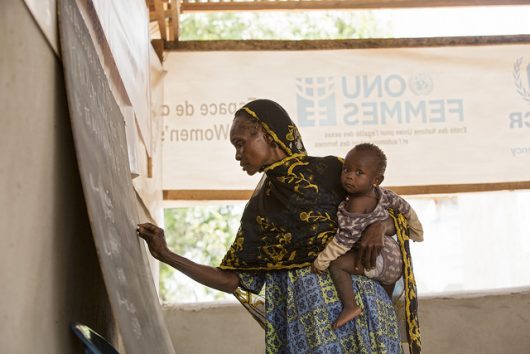Improving Girls’ Education in the Central African Republic

Today, the literacy rate of youth in the Central African Republic (CAR) remains one of the lowest in Africa, with 37 percent of children aged 15 to 24 capable of reading and writing. However, the country’s male literacy rate of 51 percent is double that of the female literacy rate of 24 percent. The substantial gap between genders indicates that the lack of girls’ education in the Central African Republic is a critical issue.
According to a 2013 report, equal access to primary school is not available for both boys and girls. Though 65 percent of girls attended their first year of school, only 23 percent were still enrolled following the sixth grade. Additionally, once girls in CAR become 13 years old, their school attendance decreases by up to 70 percent. The Central African Republic is currently one of the poorest countries with the fewest amount of girls attending school.
Barriers to Girls’ Education in the Central African Republic
Girls in the Central African Republic still face various barriers when seeking to receive a quality education:
- Lack of resources and safety. With civilians enduring the conflict of war and displacement since 2012, male and female students have lost many years of education as a result. Various villages lack schools, teaching material and basic facilities, but girls are often the worst affected as their out-of-school rates increase to 55 percent. Potential violence and terror of the Muslim Seleka rebels create dangerous conditions for any child trying to get an education.
- Teacher shortages. Conflict in the Central African Republic also resulted in a shortage of teachers, especially at the elementary level. Departing experienced teachers are typically replaced by parents or non-trained teachers, creating a lack of qualified teachers. Furthermore, these teachers will often have overcrowded classrooms with one teacher for every 80 students.
- Child marriage. The majority of female students in the CAR drop out of school because of child marriage. According to UNICEF, 68 percent of girls are married before the age of 18, and 29 percent are married by age the age of 15. The Central African Republic has the second highest child marriage rate, most likely due to poverty and low access to education.
- Sexual violence and slavery. Groups involved in the war, like the Muslim Seleka rebels or “anti-balaka” groups, use sexual violence and sexual slavery as a war tool. Survivors of these assaults are less likely to return to school due to stigma and humiliation. Others don’t return because their parents fear for their safety, especially if the assault occurred on their way to or from school. Survivors who do return to school often do not receive the support necessary to continue their education.
Improvements to Girls’ Education in the Central African Republic
There was no school in the village of Bamingui Bangoran prior to 2000; but upon returning to the CAR, Abtraman — a resident of Bamingui Bangoran — decided to open the first school in the village.
The school was built with straw, makes up three classrooms and currently serves 225 students between ages 6 to 14. The Norwegian Refugee Council (NRC) is currently constructing a new school in the village that will be able to host even more students. UNICEF funds have also helped train professional teachers and parents who are taking on the teaching role. Furthermore, NRC has created information sessions for parents to teach them the importance of maintaining their child’s education.
After parents attended these information sessions, attendance rates among female students increased. Abtraman said, “More girls are attending school, which would have been unthinkable only a few months ago.”
La Foundation la Voix de Coeur
In 2000, Beatrice Epaye, a congresswoman in the Central African Republic, took over the La Fondation la Voix de Coeur (The Voice of the Heart Foundation) — a home where female victims of violence or abandonment are sheltered, fed, educated and given psychological and medical care.
The shelter’s purpose is to help move girls off of the streets and toward a brighter future.Within the last year, the home sheltered 50 girls, aged 8 to 17. At the shelter, girls attend school and are taught how to read, write, do basic math, cook, sew and dye fabric.
The United Nations Girls’ Education Initiative
The United Nations Girls’ Education Initiative (UNGEI) established their partnership with the Central African Republic in 2004. UNGEI partners with various education associations and strives to build classrooms, recruit and train teachers and promote the message of girls’ education. Despite the recent conflicts of war in the CAR, various doors are beginning to open as parents become educated on education’s significance.
According to the president and CEO of the ONE Campaign, Gayle Smith said: “Over 130 million girls are still out of school — that’s over 130 million potential engineers, entrepreneurs, teachers and politicians whose leadership the world is missing out on. It’s a global crisis that perpetuates poverty.”
Education can be seen as one of the fundamental avenues for ending the cycle of poverty within a family. Through organizations like UNGEI and female leaders like Congresswoman Epaye, the education gap between boys and girls will be able to close.
– Diane Adame
Photo: Flickr
